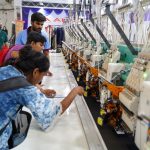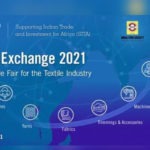
For East African countries, duty-free incentives for exports to the US under the African Growth and Opportunity Act (AGOA) provide an immense opportunity to integrate the currently fragmented cotton-textile-apparel value chain and bring remarkable trade and economic growth to the region. The existing value chain is underdeveloped and incomplete despite the fact that the region has a potentially growing cotton sector and a vibrant export-oriented apparel industry. The sector has largely remained underdeveloped. It is reported that seventy percent of cotton produced in the region is exported, while export-oriented apparel factories in East Africa have to rely on imports instead of local supplies. Key textile inputs, accessories, and machine parts also have to be imported. This has resulted in higher costs, long delivery times, outdated technology, shortage of skilled manpower, and overall inefficiency in the sector which is characterised by the high-volume, low-margin market segment. Within the East African region, Kenya and Ethiopia are believed to be the top sourcing destinations of greatest interest to global buyers. Hence, they have the highest potential to achieve regional integration of the cotton textile apparel value chain. Kenya and Ethiopia have a rapidly growing garment sector with companies focused on exporting to the US.
AGOA – renewed through 2025 – has the Third Country Fabric Provision which allows most AGOA beneficiaries to utilize yarns and fabrics from any origin and still have duty free access to the US market. Therefore, they have this major competitive advantage over their Asian competitors who have to pay an average applied apparel tariff of 11.4%. This has made AGOA countries very attractive for a number of Asian firms who are expanding their production base to Kenya and Ethiopia. A number of Chinese and Indian apparel firms have diverted their investments to these countries to take advantage of AGOA and also due to host of incentives being offered by local governmental agencies. A large number of “AGOA export-oriented factories” are coming up in Africa thanks to a renewed determination of these countries to promote the cotton textile and apparel sector. It is understood that AGOA’s provision of free access to the US market is attracting several Chinese investors to set up shops in East Africa as they are interested in exporting to the US and/or European markets. In addition, due to intense competition prevailing in their domestic markets they want to take advantage of China’s excess capacity by transferring second-hand machinery and experienced laborers to East Africa.
The ITMF Annual Conference 2018 was recently held at Nairobi, Kenya titled “Supply Chains & Business Models in Times of Rapid Change.” A number of presentations were made on the future prospects of East African countries in an emerging shift of the cotton textile apparel value chain including the one from China to East Africa. President Uhuru Kenyatta of Kenya in his speech (read at the Conference) assured the global leaders that his government has strengthened the country’s regulatory and legal framework for foreign investments providing adequate investor protection in line with international standards. Incidentally, the textiles and apparels value chain is a key area of priority in manufacturing and a central pillar of President’s Big 4 Agenda for the next five years.
This issue carries summary of various presentations made in the ITMF conference. Hope our readers will be enlightened by the global shifts taking place in the supply chain and from what the highly experienced thought leaders of the industry have to say about the impact of these shifts in coming years.
G.D. JASUJA
Managing Editor





